Largest earthquake to hit Africa for 11 years
|
The largest earthquakes in southern Africa are concentrated in the eastern countries of Tanzania, Malawi, and Mozambique, where the continent is slowly pulling apart (rifting) in an east-west orientation. This rifting forms the boundary between the Nubian and Somali plates (part of the larger African plate) and results in normal faulting earthquakes. For example, the 2006 magnitude 7.0 Mozambique earthquake, which caused several fatalities, was a normal faulting earthquake, which ruptured the southern end of the East African Rift.
The April 2017 Botswana event is also classified as a normal faulting earthquake, yet its focal mechanism, which shows the orientation of extension, is approximately perpendicular to the East African rift. Therefore, a different geological structure, which may somehow be broadly related to the East African rift, may have been responsible for this earthquake. Earthquakes in Botswana are extremely rare. Given that this event has occurred over 1000 km from the nearest tectonic plate boundary, we call these types of events 'intraplate earthquakes'. It is likely that the rupture occurred partly due to the gradual transfer of push and pull stresses from the East African Rift toward the more stable part of the continent. Occasionally, this stress is released along pre-existing weaknesses in Earth's crust as earthquakes. It is fundamentally the same reason why quakes occasionally occur in other stable regions such as the United Kingdom and the midwestern states of North America. |
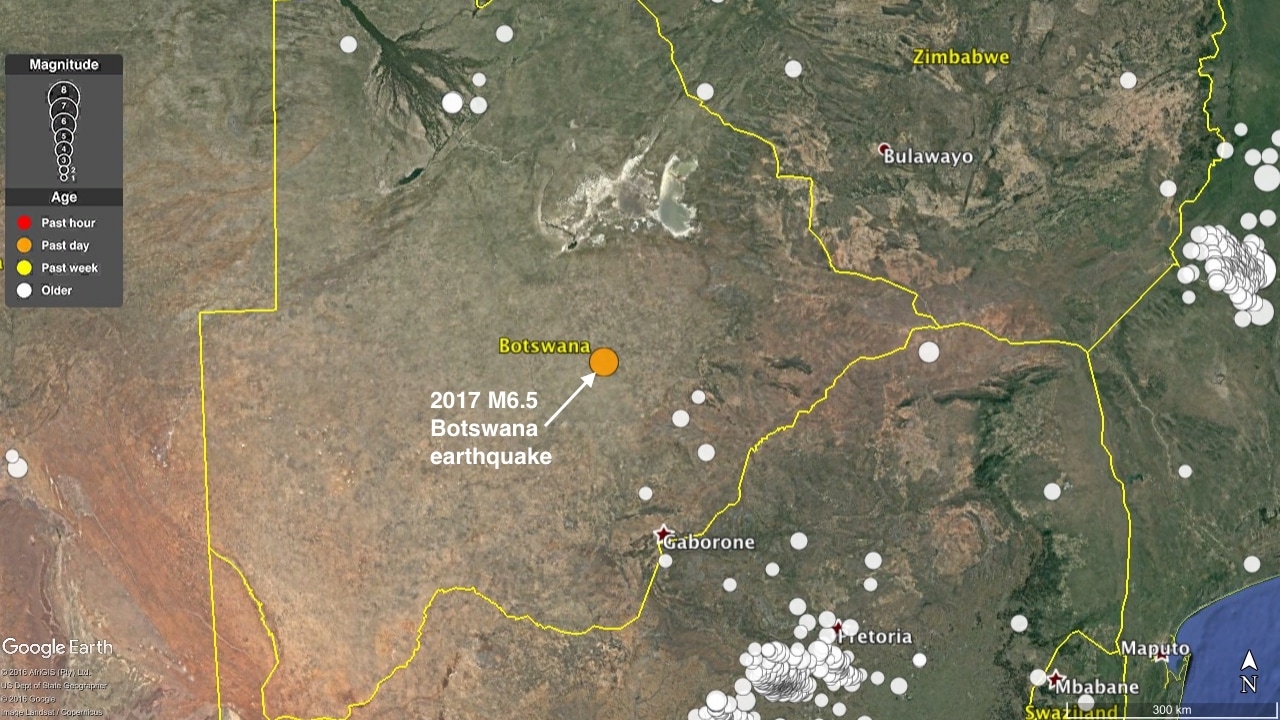 Recorded earthquakes in Botswana from the USGS catalogue
Recorded earthquakes in Botswana from the USGS catalogue
|
As with all earthquakes, there will be some aftershocks of this rupture. From the nearest real-time seismometer station located ~270 km away from the epicentre, smaller-sized aftershocks can be clearly seen occurring in the hours ensuing after the mainshock.
Two aftershocks have been recorded by Germany's GEOFON monitoring system. One of these aftershocks had a magnitude of 4.6; the other magnitude 4.1. Based on Bath's aftershock law, it is plausible to expect aftershocks as large as magnitude 5.4. |
|
Possible complexity in the rupture
|
Early estimates of the earthquake's depth suggest that it occurred deep within the continent (in the mid-lower crust). Therefore, there is likely to be very little data available from possible surface ruptures.
When a large global earthquake occurs, the GEOSCOPE seismic observatory, based at IPGP in Paris, automatically calculate rupture 'source-time functions'. These graphs show how the amount of energy released by the earthquake changes during the rupture.
The GEOSCOPE solution (right) shows at least two distinct peaks in energy release, possibly indicating that the earthquake was composed of multiple, distinct ruptures.
This complex source time function can also be seen from the rare seismic waveforms from distant stations.
|
|
Stresses from Eastern Africa?
A large quake in Botswana is puzzling because it is made of Proterozoic and Archean rocks, the oldest and generally most stable on Earth
— Caroline Beghein (@caro_aniso) April 4, 2017
@EC_Kosters @SeismoSue @seismo_steve But this may also be purely coincidental. The lack of nearby seismic stations together complexity of the African crustal anisotropies make
— tectonictweets (@tectonictweets) April 4, 2017
@EC_Kosters @SeismoSue @seismo_steve The orientation of the focal mech is consistent with the regional fabric so there may be reactivation of ancient basement structures
— tectonictweets (@tectonictweets) April 4, 2017
Re-activation of an ancient tectonic boundary?
@caro_aniso Magnitude 7 or maybe 7.5 is a typical Mmax estimated for "stable continental crust."
— Susan Hough (@SeismoSue) April 4, 2017
Update 1 (05/04): Interplay between tectonics and earthquake activity in southern Africa
Update 2: Gravity sheds light on the possible fault(s) that ruptured
The April 2017 earthquake occurred in a highly deformed region separating the Kaapvaal Craton from the Zimbabwe Craton. The paper calls this region the Limpopo–Shashe Belt. This belt is composed of many northwest-southeast trending shear zones and reverse (thrust) faults that were formed as the Kaapvaal and Zimbabwe cratons slammed into each other billions of years ago (during the Archean eon). The authors speculate that this collision might have been similar to the same mountain building process that has resulted in the present-day Himalayan chain.
As the map shows below, the Mahalapye Shear Zone may be related to the fault that ruptured in April 2017. The orientation of the fault is parallel to the orientation of the focal mechanism. However, the rupture was extensional - not compressional like the mapped fault. Therefore, it is possible that the regional extensional rift tectonics in Southern Africa have reverse the sense of motion of these faults in a so-called stress inversion.

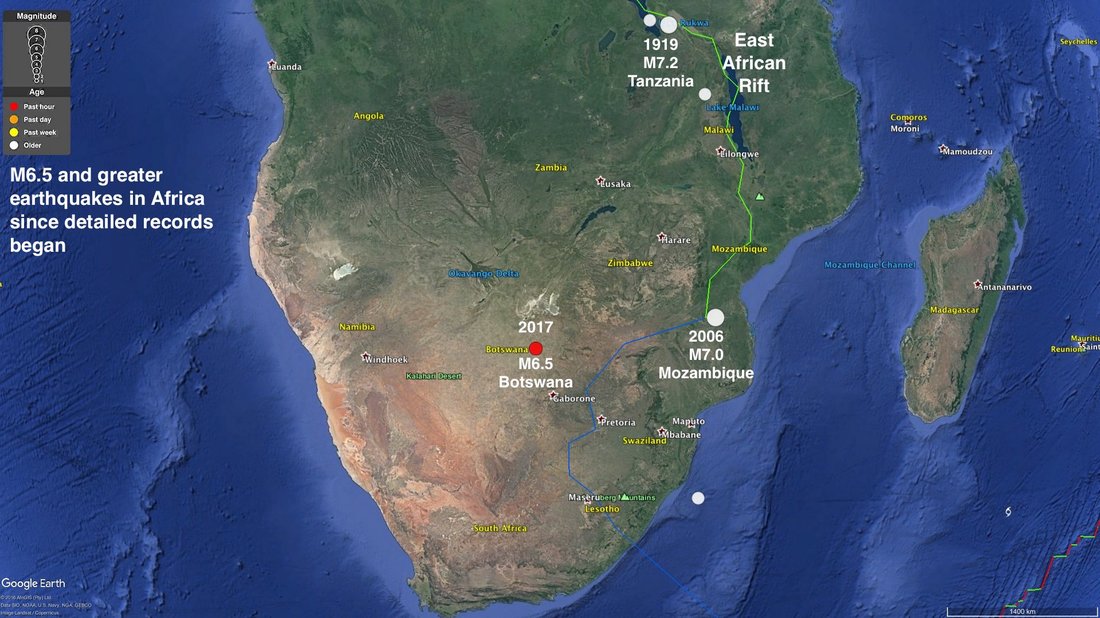
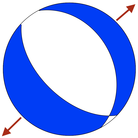
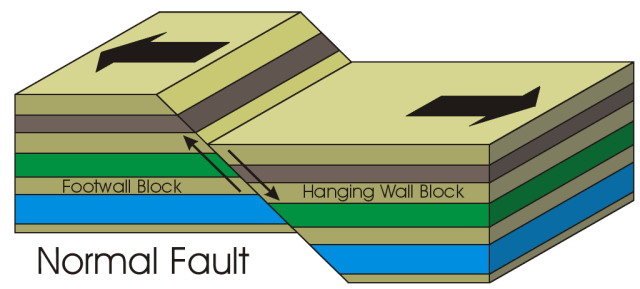
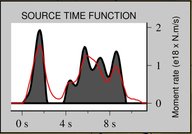
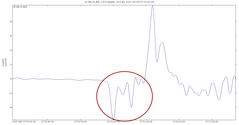
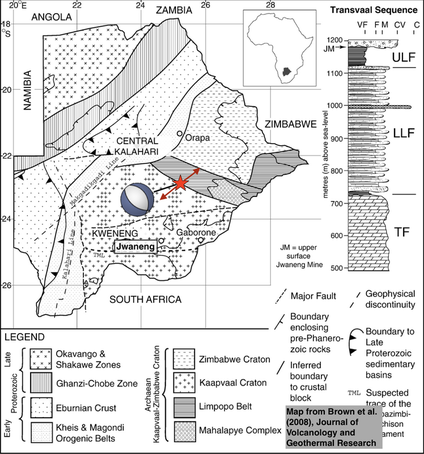
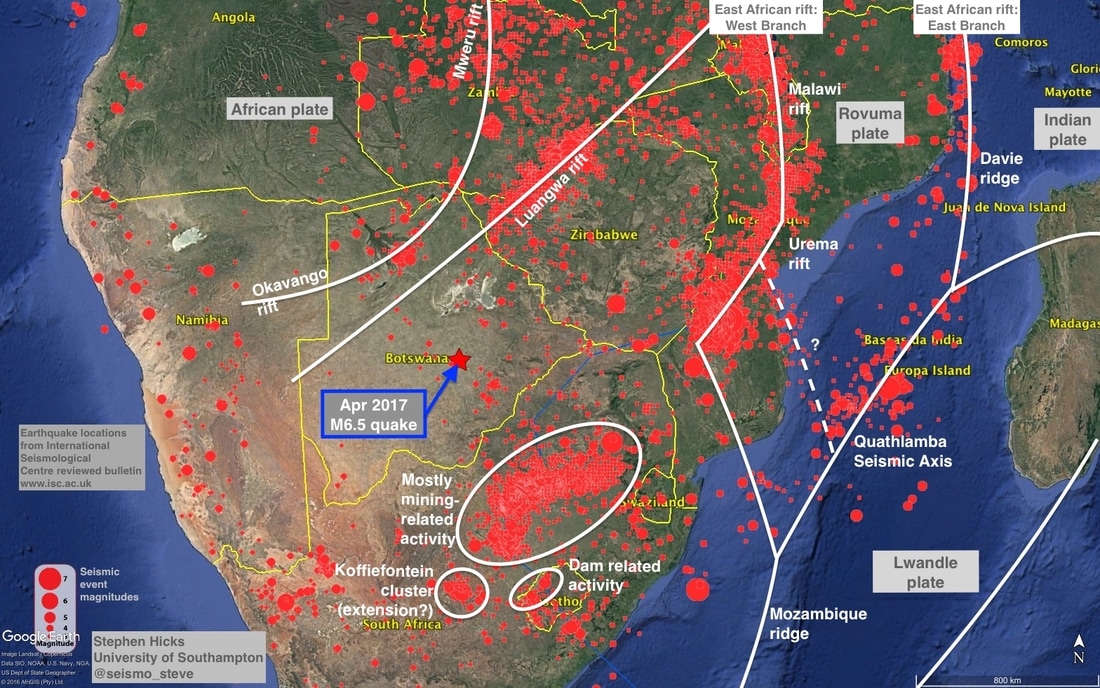
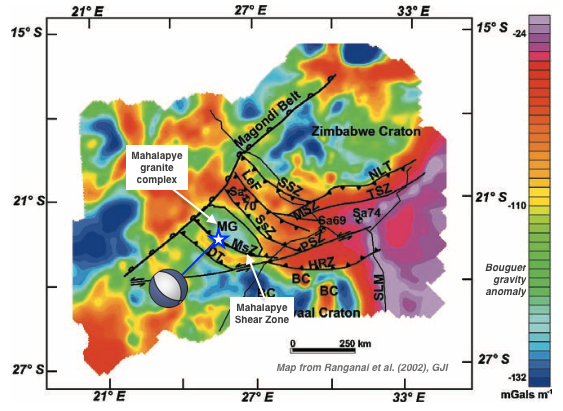
 RSS Feed
RSS Feed
